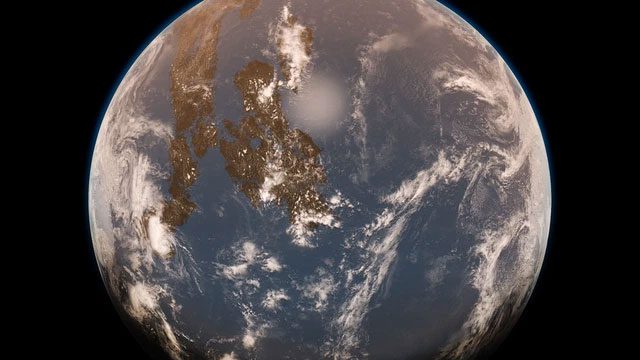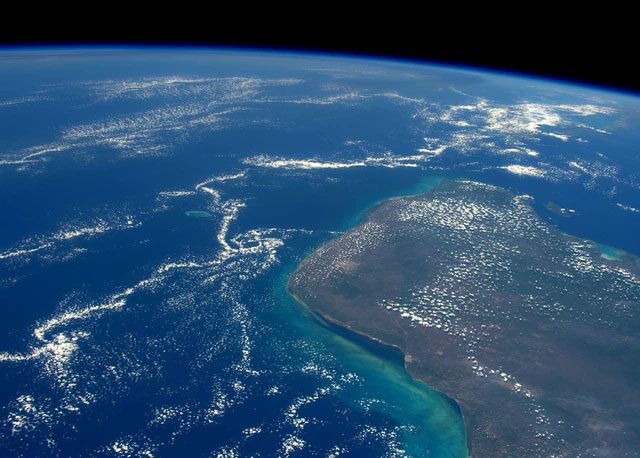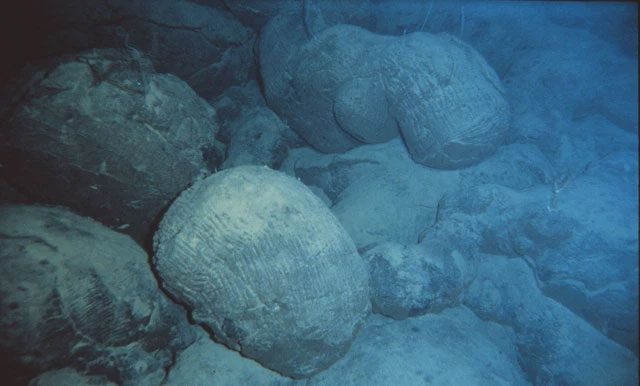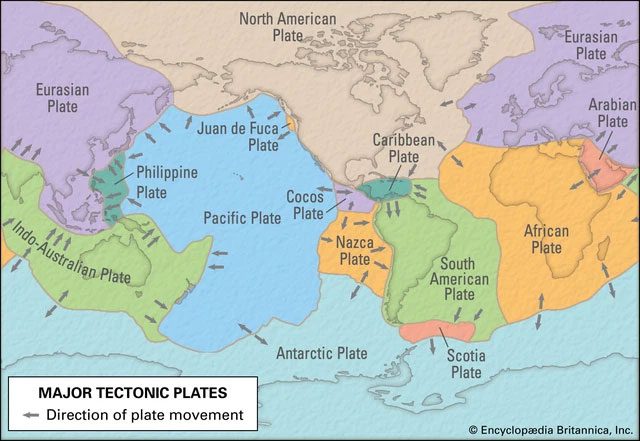Throughout various eras, sea levels have fluctuated under the influence of global average temperatures, causing the Earth’s surface to change over time.
As science has advanced, we have gathered more evidence suggesting that around 3 to 5 billion years ago, Earth’s oceans contained twice the amount of water we see today, enough to submerge Mount Everest below sea level. It is likely that the water covering the continents hindered the flourishing of life on the surface of the Earth.

Researchers believe that land was a “rare commodity” 3-4 billion years ago.
In the mantle just below the Earth’s crust, researchers suggest that a hidden ocean resides within the mineral layer. However, during the early chapters of Earth’s history, the mantle was four times hotter than it is today due to radiative effects. Recent studies in hydraulics indicate that ancient minerals would struggle to retain water under high temperatures and pressures.
“This suggests that water must have been located elsewhere,” asserts Junjie Dong, a graduate student in mineral physics at Harvard University, in a recent report. Based on models constructed from various previous experimental results, Dong concludes in a report published in AGU Advances: “It is likely that a large amount of water was stored on the surface.”
According to geologist Michael Walter, Dong’s report is intuitively sound. “This is a simple idea but leads to significant insights,” he stated.

The oceans billions of years ago may have been much larger than today.
There are two minerals in the mantle that contain a significant amount of water: wadsleyite and ringwoodite, two variants of the volcanic mineral olivine, which form under high-pressure conditions. These mineral-rich layers account for up to 7% of the Earth’s mass, and even though only 2% of that contains water, experimental mineralogist Steven Jacobsen believes that “small accumulations can lead to significant amounts.”
Jacobsen and his team recreated these minerals by compressing rock powder under extreme pressure and heating it to over 1,600 degrees Celsius. Subsequently, Dong’s research team conducted studies showing that wadsleyite and ringwoodite retain very little water under high temperatures. From this, they hypothesized that as the mantle cooled over time, the amount of water-retaining minerals increased, combined with a higher capacity for water absorption, leading the oceans that once covered the surface to gradually recede underground.
The aforementioned experiments are not the only evidence supporting the Water Earth theory. Geologist Benjamin Johnson confirms that there is substantial geological evidence reinforcing these arguments. The titanium content in 4 billion-year-old zircon crystals indicates they formed beneath the surface. In Australia and Greenland, there are 3 billion-year-old land areas exhibiting structures of lava that cooled in water.

Rock structures indicate they were once lava cooled in water.
Research authored by Benjamin Johnson and Boswell Wing, two geologists from the University of Colorado, continues to provide additional evidence. A 3.24 billion-year-old soil sample found in Australia, which was once the outer layer of the ocean floor, contains a high concentration of heavy oxygen isotopes, significantly higher than those found in today’s ocean floor. This is because these heavy isotopes would dissolve upon contact with rain, indicating that the ancient soil sample had not yet been exposed to the atmosphere to receive rain at that time 3.24 billion years ago.
The conclusion of the study published in Nature Geoscience does not immediately assert that the oceans of 3.24 billion years ago were larger than today’s oceans, but it is clear that most of the land at that time was likely submerged.
While a vast ocean would prevent land from being exposed, it may also explain why continental plates moved so much during the early stages of Earth’s history. According to Rebecca Fischer, a geologist at Harvard, a large ocean could have pushed additional water into the cracks of the Earth’s crust, weakening the surface structure and causing geological plates to shift vigorously. As the geological plates began to subduct, the rigid mantle continued to bend the plates, causing continental movement.

Geological plates as defined today.
Evidence of an ocean covering Earth challenges hypotheses about how life formed on our planet. Some researchers argue that life originated from deep hydrothermal vents in the ocean, while others believe it arose from nutrient-rich puddles on land—shallow pools that allowed for the accumulation of chemical compounds, which gradually interacted to create life.
However, as the Water Earth theory gains credibility, the formation of shallow puddles on the surface of the Earth becomes less convincing; without land, there can be no puddles, and seawater would dilute the chemical layers that took time to form. Some proponents of the “shallow puddle hypothesis” are rethinking the origins of life as more evidence for the Water Earth emerges.
The theory of a water-logged world serves as a reminder that Earth has undergone many evolutionary phases. It is likely that before the Water Earth formed, this barren planet had to accumulate water from extraterrestrial bodies falling onto its surface. If the amount of “extraterrestrial” water were greater, or if the mantle had a lower capacity to absorb water, life may never have formed.
“Earth possesses a delicate system. Too much water, or too little water, everything might not fit together,” concludes researcher Dong.





















































